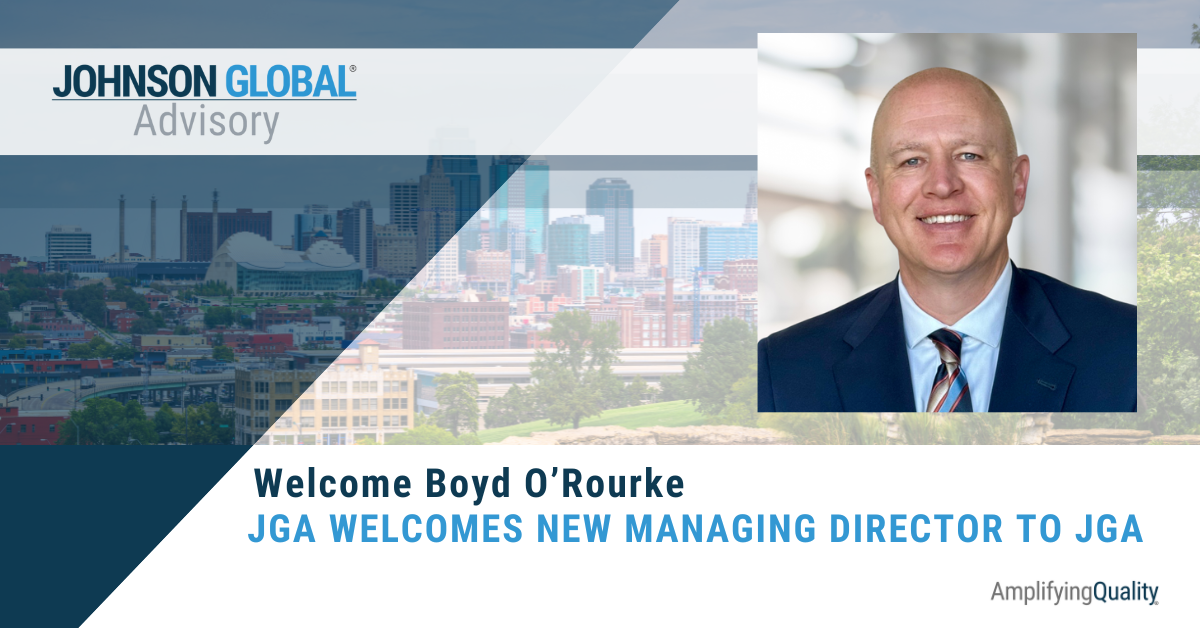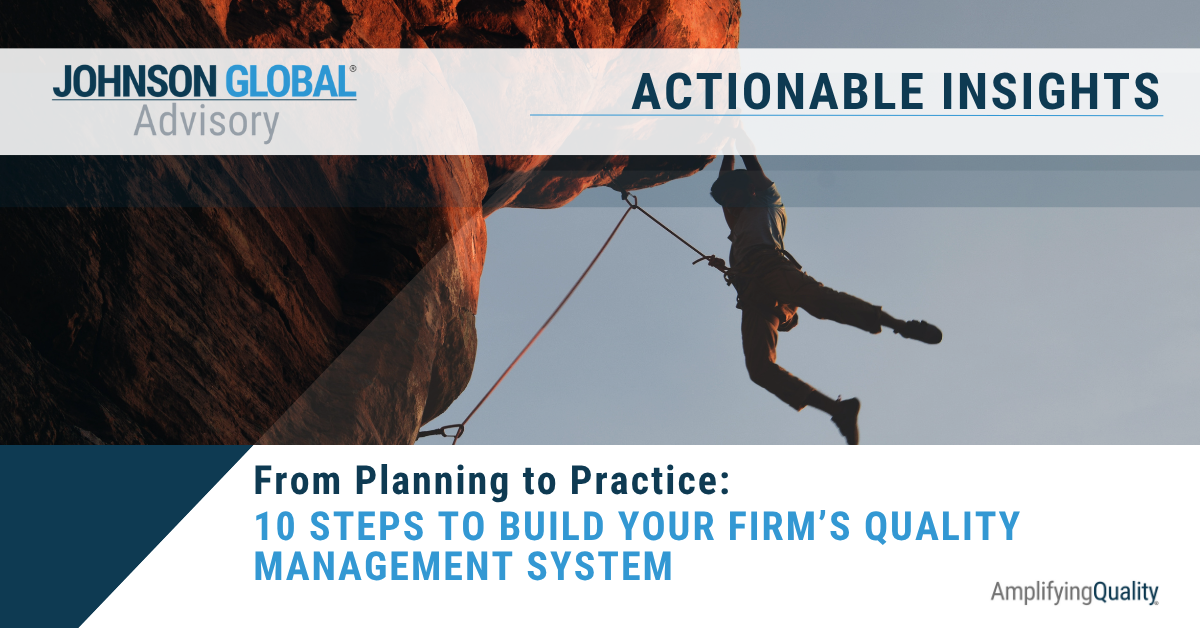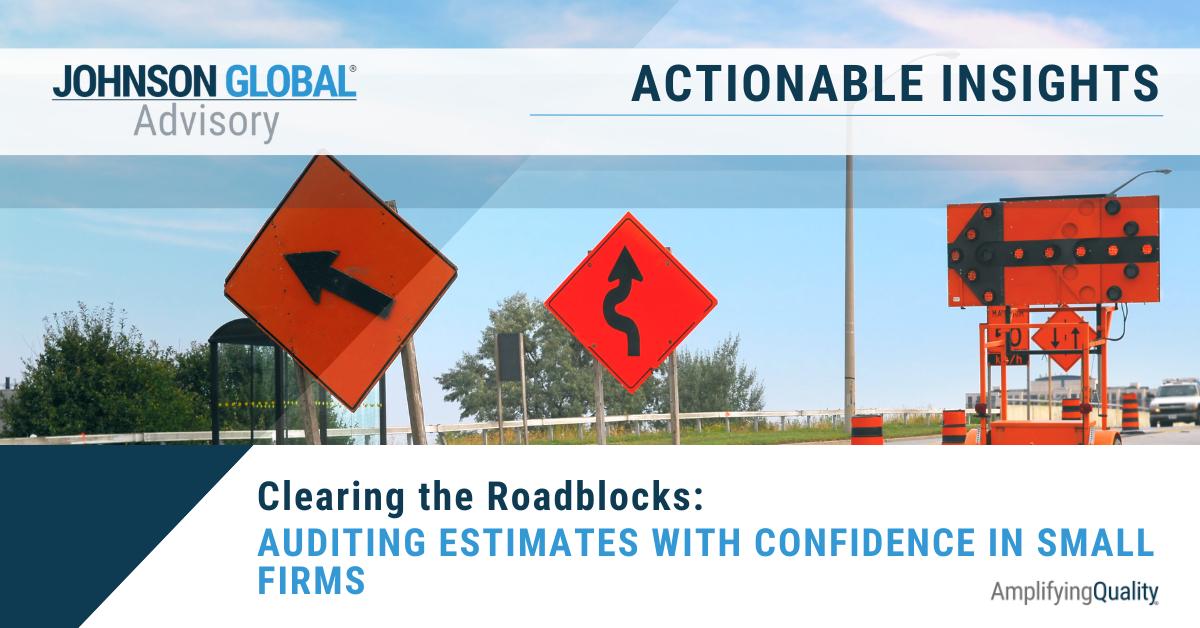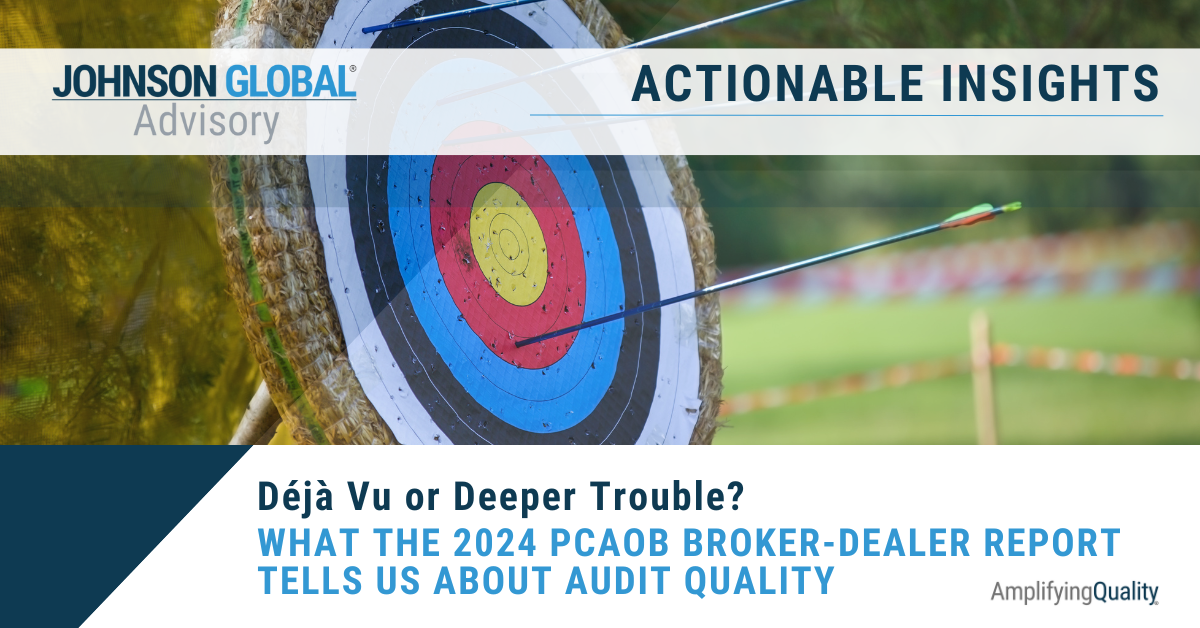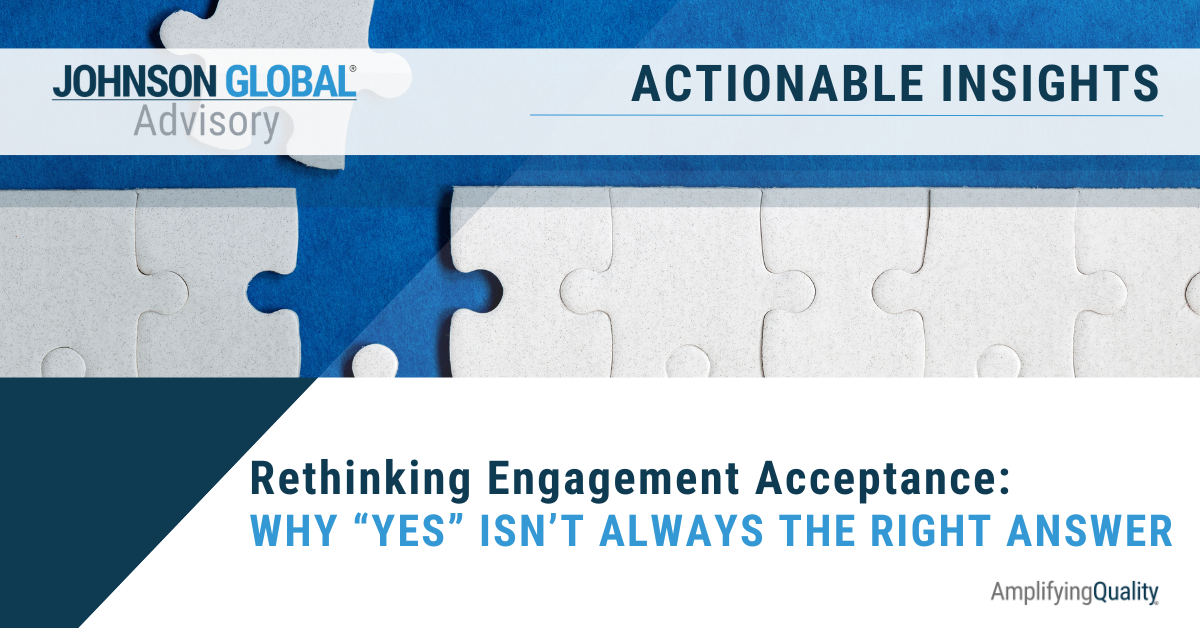The Timeless Truth About Timing: How Planning Impacts Quality

There are so many quotes and sayings about planning and timing.
Failing to plan is planning to fail. Timing is everything. An hour of planning can save hours of doing.
I know, it’s all so cliché, but is it not true? The classic and timeless Jane Austen once wrote: “It is a truth universally acknowledged, that a quality audit in possession of a good engagement team must be in want of a well-planned audit timeline.” Maybe I’m paraphrasing here, but if Jane Austen wrote it, indeed, it must be true.
In the past few years, working with JGA, I have performed numerous root cause analyses looking at both firm and engagement deficiencies. While most deficiencies are the result of multiple contributory root causes, there is one root cause that seems to be pervasive: timing. Countless times I have reviewed audit files where the partner and EQR sign-offs are just days before the opinion. Sometimes planning for a 12/31 audit isn’t prepared until January or February or planning is prepared in October but isn’t reviewed until the year-end audit is well underway. How can an engagement team successfully execute a quality audit if the planning and risk assessment hasn’t been finalized and/or reviewed until half-way through the year-end audit? If partner and EQR reviews occur the day before (or even sometimes the day of) the audit opinion, what ability does the audit team have to feasibly address comments or perform additional procedures based on those reviews?
We get it. Audits are fast-paced. And with so many regulatory reporting requirements, inevitably, no matter how hard we try, there is always a fire drill to complete the work. But that doesn’t excuse the lack of sufficient planning and timely execution of audit procedures.
On numerous pre-issuance reviews, often, I am surprised to find teams still auditing a Q1 acquisition almost a year later. Yes, the measurement period remains open for a year, but that doesn’t mean that it takes a year to perform audit procedures. Management has to report the acquisition in the proceeding 10-Q to the best of its ability. Therefore, engagement teams could be performing audit procedures over the acquisition accounting and fair value measurements right after the acquisition.
But let’s not focus solely on engagement teams. Firms continually approach us to assist with various aspects of quality management, whether performing monitoring procedures, such as post-issuance reviews, or assisting with PCAOB remediation, including drafting the response to the PCAOB as well as designing and implementing remedial actions. Often, firms are coming to us at the eleventh hour asking for help. While this is what we are here for, quality takes time. Anything done at the last minute inherently has a greater risk of errors and mistakes.
As an industry, we don’t give proper weight to planning and timing. So what exactly does it mean to plan effectively?
Better Project Management
Traditionally, there are two types of partners in the accounting industry: technical partners and relationship partners. Technical partners are specialists in audit and accounting. We call them in when we have specific questions about an embedded derivative in a complex debt-equity financing and they’re the ones who will quote the codification in their response. The relationship partners, however, manage client relationships and land new business. But what about the partners who execute strong, quality audits? In the audit profession, auditors are promoted to senior associate and eventually to manager. We expect them to take over audits and manage these “projects”. Project management is a specific skillset that is not specifically linked to audit skills. Perhaps firms could provide training for managers on project management to help facilitate this new role as manager.
Defining the Process
Within an audit specifically, I would break down the timeline into three distinct phases: planning, interim and year-end fieldwork. While planning and risk assessment is an iterative process, the bulk of planning can be done early (e.g. Q2 or Q3). Interim can be built into quarterly reviews for public clients or can be planned around hard closes, such as a 9/30 close, enabling some year-end audit work to be brought forward to October or November. Yes, certain accounts can only be tested at year-end, such as estimates for inventory reserves, but there is plenty of other work that can be done at interim such as revenue, inventory pricing, and PP&E testing. And then finally, there is year-end testing leading up to the audit opinion.
To plan for various phases, teams need to create detailed budgets that align with the timeline. I say this, fully realizing, budgets are a source of much contention. Managers feel pressure from firm leadership and the engagement partners to maintain and/or improve realization year over year while trying to make a realistic budget with appropriate staff and hours to execute the audit correctly.
Having worked with the PCAOB and focusing now on audit quality as opposed to profitability metrics, I challenge the idea that audits in subsequent years will always be more efficient. Certainly, a second-year audit will be more efficient than a first-year audit and over time, some advancements bring efficiencies such as new software or audit technologies. But what about the loss of knowledge and experience from turnover of staff? Or incremental time for new auditing standards such as CAMs, or for new firm practice aids rolled out as part of PCAOB remediation? Are firms adjusting for these areas in the budget?
The point is to be realistic. A budget typically starts with the prior year actuals. Let’s not pretend that those hours are entirely realistic. Firms preach that staff should never eat hours, but then get upset with managers when realization goals aren’t met. There are too many conflicts of interest here. So be realistic. If a firm expects an improvement in realization year over year, have an honest dialogue about where that realization is going to come from? Once the budget is finalized, then it is time to start allocating those hours between planning, interim and year-end.
So far, this all makes sense and many teams do have early planning and interim phases. But, when all the work is documented and prepared, who performs the review? Effective planning means doing real-time reviews as the work is being performed. This also allows for practical coaching of younger staff as they perform audit work and allows for course correction before it’s too late to change an audit approach.
Resource Management
Once budgets and timelines are laid out, the next challenge is to plan resources. Resource management is already embedded in the PCAOB QC standards. However, it will become an even more important component once firms adopt the new AICPA, PCOAB and IAASB standards on quality management.
Speaking purely of human resources, firms need to consider first and foremost, do we have enough staff? Resource shortages create a struggle of prioritization where firms play “catch-up” focusing on the most urgent clients (usually based on deadlines) and thus, planning and interim for other clients is delayed and the cycle perpetuates.
While I can’t claim causation, I can say there is a correlation between staff workloads and audit quality. The greater the workload (especially factoring in concurrent year-ends), typically the lower the audit quality.
In addition to figuring out if you have enough resources (staff), firms then need to think through resource allocation considering strengths, skillsets, etc. In other words, do we have the right resources with technical and/or industry knowledge? Do we have the right staff-level mix? And do we have a project manager to ensure the process is moving along efficiently?
The new quality management standards have an entire component designated to resource management and actually expands from just human resources to incorporate both technology and intellectual resources. Firms will be forced to implement policies to provide the right resources and to monitor the effectiveness of those policies. In other words, if engagement teams are overworked or don’t have the right technological or intellectual resources, firms will need to remediate this deficiency. This requires early planning.
Client Management
While I might advise firms as a consultant and preach “early timing,” I haven’t forgotten the complications of client management. Many delays can be traced, in part, back to client delays. Part of project management is working with the client on timelines that are reasonable. I encourage teams to have these discussions early (e.g. Q1 or Q2 of the fiscal year) so that both the client and the engagement team can plan accordingly.
Equally important is holding both parties accountable to agreed-upon timelines. Engagement teams must meet planning, interim and year-end deadlines. Clients need to be held to agreed deadlines. If the client is delayed by a week, then the logical response is that the opinion will need to be delayed a week as well. The client can’t just expect that the audit team will make up one week of time without some impact on quality. I realize it’s more complicated than this. However, it’s either a tough conversation with the client or risk a potentially poor-quality audit and a tough conversation with the PCAOB during an inspection.
Firm Leadership Management
Finally, these same concepts apply to firm management. One of the main components of quality management is tone at the top. If firm management doesn’t adequately plan for the design, implementation and execution of quality management practices, then how can it hold engagement teams to this same expectation?
Under the current QC standards, there are firm programs that require significant time and planning. Take for instance practice monitoring, which can be a huge time commitment. Despite that, I don’t know of many firms who create a budget or establish timelines to complete these reviews. Even if it’s not client-facing, firms need to understand the nature of the various projects, create budgets, layout timelines and then appropriately staff the programs.
Similarly, PCAOB remediation, depending on the number of QC criticisms, can be a huge undertaking. Many firms are not budgeting for the design and implementation of the remedial actions as well as the actual remediation submission to the PCAOB. Although firms have one year to respond, many wait until the last couple months to initiate remedial actions. Specific to this concern, the PCAOB is now asking firms to engage in a dialogue within 60 days of receiving the report. Early planning leads to effective and quality remediation.
Early planning trickles down into other aspects of quality management, such as releasing new guidance and templates early in the year so that engagement teams have the most updated methodology prior to commencing audit procedures. Similarly, firms that plan training well in advance allow for quality content to be created and can ensure staff reserve the time to participate live.
With the new quality management standards coming down the pipeline, I cannot emphasize enough the importance of planning early for this undertaking.
There’s nothing new here. The point is, in a time where resources are tight and we are attempting to do more with less, it’s critical firms and engagement teams plan early and accelerate timing to facilitate quality both at the audit engagement level as well as the firm quality management level. If that isn’t happening, consider hiring project managers or reach out earlier to consultants to assist. While the industry may preach best practices, we need to start holding ourselves accountable. After the new quality management standards are implemented, firms won’t have a choice, because once the root cause for deficiencies is linked to timing, they’ll have to implement new controls and policies to ensure adequate and early planning.
To keep with my theme of timeless literature, the Ancient Greek poet, Hesiod, once said (and this time, I’m not paraphrasing), "Observe due measure, for right timing is in all things the most important factor."
About Johnson Global Advisory
Johnson Global partners with leadership of public accounting firms, driving change to achieve the highest level of audit quality. Led by former PCAOB and SEC staff, JGA professionals are passionate and practical in their support to firms in their audit quality journey. We accelerate the opportunities to improve quality through policies, practices, and controls throughout the firm. This innovative approach harnesses technology to transform audit quality. Our team is designed to maintain a close pulse on regulatory environments around the world and incorporate solutions which navigate those standards. JGA is committed to helping the profession in amplifying quality worldwide.
Visit www.johnson-global.com to learn more about Johnson Global.

